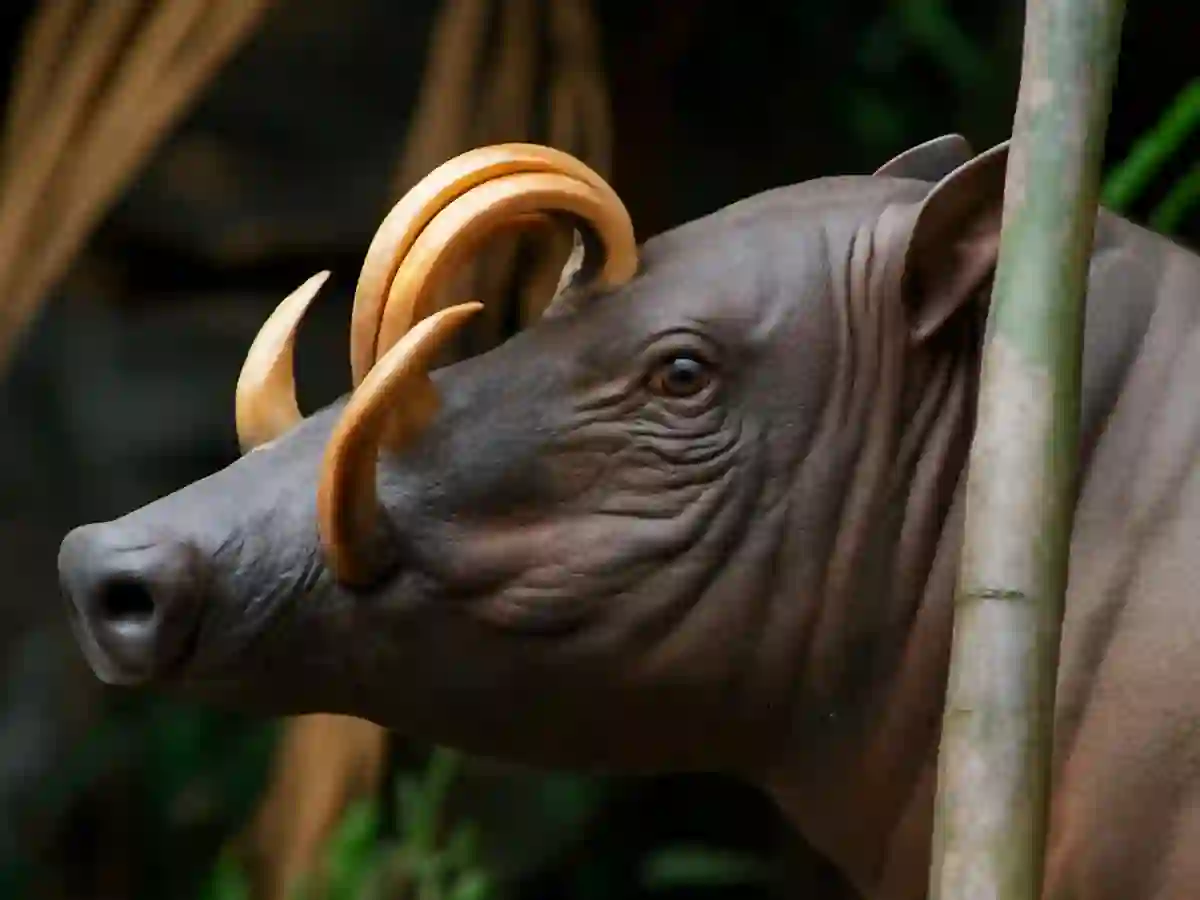Nature never runs out of surprises—and the babirusa is a prime example.
Found on the Indonesian island of Sulawesi, this wild pig looks like something out of a fantasy novel.
Its most eye-catching feature? Enormous, upward-curving tusks that seem to defy both logic and gravity.
But while they’ve sparked plenty of questions, there’s a fascinating purpose behind this bizarre design.
Giant Tusks That Curl Right Through the Face
Male babirusas don’t just have tusks—they have gigantic ones.
The upper tusks grow straight through the top of the snout and can even curve back into the animal’s forehead.
Lower tusks grow in the usual pig-like way, but they’re pretty hefty, too.
At first glance, these oversized “fangs” seem more like a burden than a benefit.
A Mystery That Even Challenged Darwin
For more than a century, scientists—including Charles Darwin himself—have wondered how these unwieldy tusks make any sense in the natural world.
They aren’t good for fighting off predators, and they don’t help with feeding.
So why would evolution allow such seemingly useless—and even dangerous—growths to persist?
The Answer Lies in Mating, Not Survival
The key to understanding babirusa tusks is sexual selection.
While natural selection is all about survival, sexual selection focuses on reproduction—how traits help an animal attract a mate.
For the male babirusa, those tusks are a visual signal of strength, health, and dominance.
The bigger and more elaborate, the better the chances of winning over a female.
Interestingly, female babirusas don’t have these upper tusks at all—and their lower tusks are much smaller.
Why the Tusks Don’t Get in the Way of Eating
Despite how extreme the tusks look, they surprisingly don’t interfere with feeding.
Babirusas are strict vegetarians, not omnivores like most pigs.
They feed on leaves, stems, and fruit, and their stomachs are uniquely adapted for this plant-based diet.
Because they don’t need to dig or tear flesh, their dramatic tusks don’t disrupt mealtime.
A Stomach That Works Like a Cow’s
One of the coolest things about the babirusa is its stomach—it’s more like a cow’s than a pig’s.
It contains special bacteria that help break down tough plant fibers, allowing the babirusa to digest leaves and other coarse vegetation with ease.
So while those tusks might look like they’d get in the way, they don’t play any role in chewing or food processing.
No Natural Predators Meant Room for Fancy Tusks
Here’s another interesting twist: Sulawesi, where the babirusa evolved, didn’t have any major predators before humans showed up.
That meant the species didn’t have to develop tools for defense.
So instead of tusks for fighting off danger, babirusas grew tusks to show off—focusing on reproduction rather than survival.
A Wild Pig That’s Truly One of a Kind
In the end, the babirusa’s tusks aren’t just random oddities—they’re an essential part of the species’ evolutionary story.
They help males stand out, attract mates, and carry on their genes.
While they might look strange to us, in the animal kingdom, they’re nature’s version of a billboard that says: “I’m strong, healthy, and ready to mate.”

